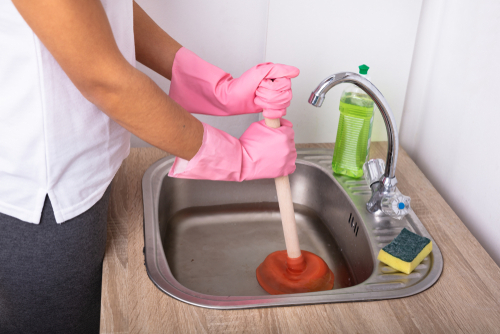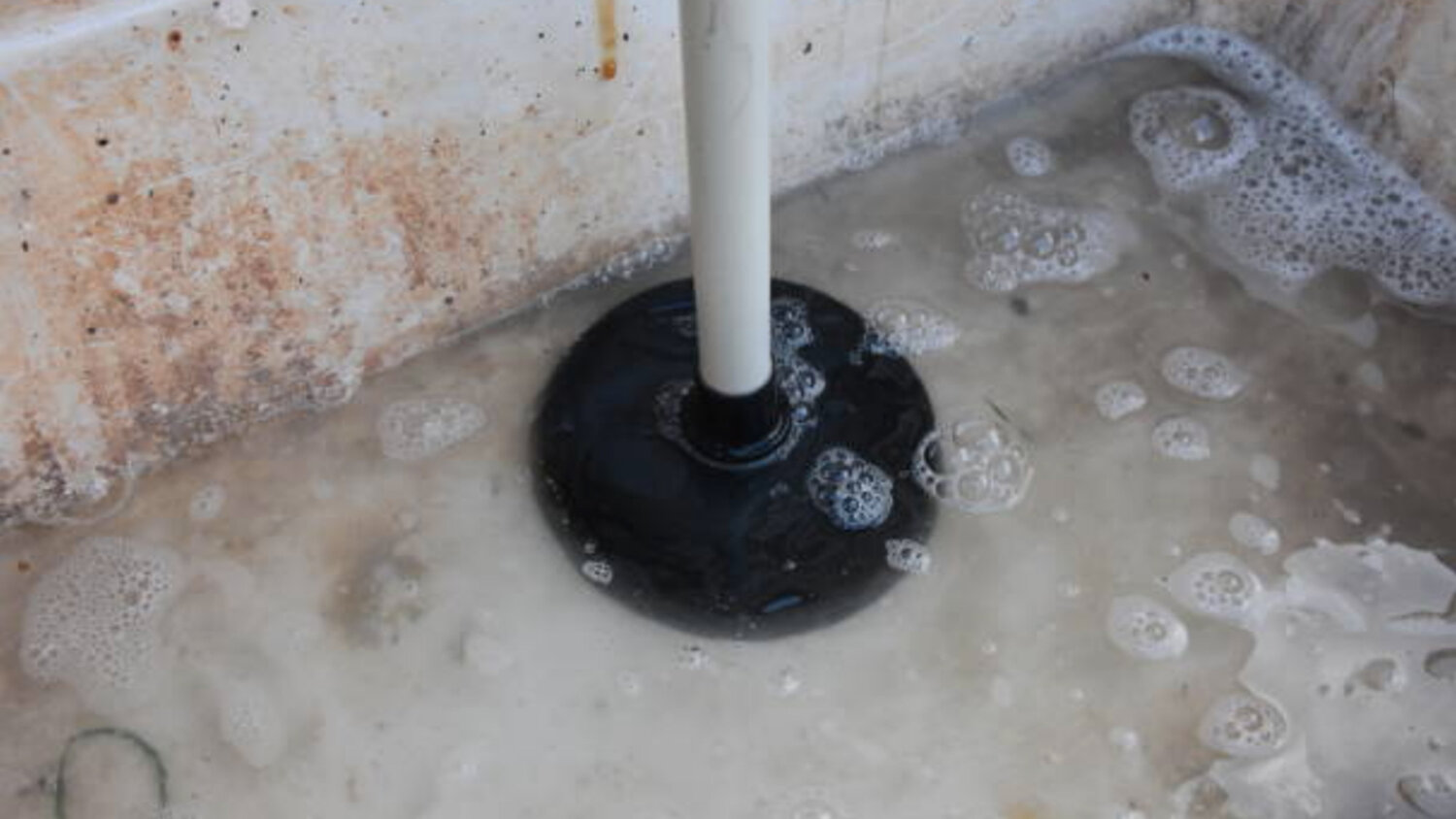Improving Plungers and Drain Cleaner: Expert Methods
Improving Plungers and Drain Cleaner: Expert Methods
Blog Article
What're your ideas concerning Here's How to Correctly Use a Toilet Plunger?

Introduction
Appropriate maintenance of home drains pipes is essential for avoiding blockages and making certain smooth water circulation. One of the key tools in every homeowner's toolkit is the bettor, together with various drainpipe cleaners made to deal with stubborn obstructions efficiently. This write-up checks out how to utilize bettors and drain cleansers effectively to maintain your drains pipes flowing openly.
Section 1: Comprehending Bettors
Types of Plungers
There are a number of sorts of plungers offered, each made for different types of drains and blocks. The most common types include cup bettors, flange bettors, and accordion bettors.
Just How Plungers Work
Bettors work on the principle of developing pressure and suction to dislodge clogs. When appropriately applied over a drain, they create a vacuum cleaner that can pull out particles or separate obstructions.
Picking the Right Plunger
Choosing the right plunger depends on the type of drainpipe and the nature of the blockage. Cup bettors are ideal for sinks and bathtubs, while flange plungers are better matched for bathrooms due to their layout.
Common Blunders with Plungers
Avoiding these errors guarantees reliable plunging: incorrect seal around the drainpipe, insufficient pressure, and not clearing surrounding particles.
Section 2: Utilizing Plungers Properly
Preparation
Prior to diving, ensure the plunger covers the drainpipe entirely and forms a tight seal. Clear any type of noticeable particles around the drainpipe opening.
Strategy
Start with mild plunging movements to develop suction. Increase pressure progressively, utilizing a consistent rhythm. Repeat as required up until the drainpipe clears.
Fixing Tips
If plunging does not work, attempt readjusting the seal, applying oil jelly for a much better seal, or utilizing a various sort of bettor.
Section 3: Understanding Drain Cleaning Company
Kinds Of Drainpipe Cleaning Company
Drain pipes cleansers can be chemical or chemical. Chemical cleaners utilize strong chemicals to liquify obstructions, while enzymatic cleaners utilize all-natural enzymes to break down raw material.
Just How Drainpipe Cleansers Work
Chemical cleansers respond with blockages to dissolve them, while enzymatic cleaners break down natural materials like hair and oil without hurting pipes.
Safety and security Factors to consider
Always put on gloves and eye defense when utilizing chemical drain cleaners. Ensure ample ventilation and adhere to manufacturer directions carefully.
Eco-Friendly Alternatives
Think about making use of vinegar and cooking soda or enzyme-based cleaners for green alternatives that are safer for pipes and the environment.
Section 4: Utilizing Drainpipe Cleaning Company Properly
Application Techniques
Pour chemical cleaners directly into the drainpipe opening. Enable them to benefit the advised time before purging with warm water. Chemical cleaners should rest overnight.
Safety measures
Avoid mixing various kinds of cleaners, as this can create toxic fumes. Never use chemical cleansers along with a plunger, as spilling can happen.
Dealing With Persistent Blockages
For consistent clogs, take into consideration making use of a pipes snake or calling a specialist plumbing professional to prevent damages to pipes.
Verdict
To conclude, recognizing exactly how to make use of plungers and drain cleansers efficiently is essential for preserving healthy and balanced plumbing systems. By selecting the right devices and strategies, property owners can take on small clogs and avoid significant pipes problems down the line.
How To Properly Use A Plumbing Snake To Clear Drains
When any drain clogs in our home arise, we tend to gravitate toward the plunger and little else. In cases where the plunger and its vacuum-created pressure are not able to clear clogs, many immediately move to harmful chemicals or simply call their plumber to fix the issue.
we’re happy to help with all drain cleaning needs and concerns. This includes informing you on a few other home remedies you may have at your disposal for minor to moderate clogs, one of which is the use of a plumbing snake. Many people have never used one of these before – let’s go over the steps to take when your drain clogs and you have a plumbing snake available.
Attempt Plunger Use
The first step here, as we noted above, should indeed be to grab your plunger when you notice a drain clog and attempt to resolve it this way. If you’re unsure how to use a particular type of plunger, our plumbers can answer any questions you have. If this doesn’t do the trick, however, you move on to the snake.
Locate And Prepare Snake
A plumbing snake is a metal or plastic device that’s generally about a quarter of an inch thick. It’s design with significant extensions, meant to reach down into your clogged drain and push the clog out. Snakes also contain drain augers that will latch onto and push stubborn blockages.
If your plunger doesn’t clear a clog, locate your snake and bring it to the drain in question. We also recommend keeping a bucket nearby to collect the clog once you pull it out, plus we’d advise wearing goggles and possibly protective gloves.
Feed Snake
Once you’re ready to go, feed the snake slowly down the drain, using the crank device it comes with to keep it moving until it finds the clog. Once this happens, much of the clog will be latched onto the coil so you can pull it out, while the rest will simply break up and flow downward.
Detach Debris
Remove the snake slowly from the drain, and once you’ve done so, pick off any debris that’s stuck to the coil. This is another area where wearing gloves is a must.
Flush Drain
Finally, take a few minutes to ensure the snake has done its job correctly. If you’ve been using it on a toilet, flush the toilet a couple times and make sure everything flows well. If you’ve used it on a different drain, flush it with some room temperature water.
https://www.mybuddytheplumber.com/blog/how-to-properly-use-a-plumbing-snake-to-clear-drains/

Application Techniques
Pour chemical cleaners directly into the drainpipe opening. Enable them to benefit the advised time before purging with warm water. Chemical cleaners should rest overnight.
Safety measures
Avoid mixing various kinds of cleaners, as this can create toxic fumes. Never use chemical cleansers along with a plunger, as spilling can happen.
Dealing With Persistent Blockages
For consistent clogs, take into consideration making use of a pipes snake or calling a specialist plumbing professional to prevent damages to pipes.
Verdict
To conclude, recognizing exactly how to make use of plungers and drain cleansers efficiently is essential for preserving healthy and balanced plumbing systems. By selecting the right devices and strategies, property owners can take on small clogs and avoid significant pipes problems down the line.
How To Properly Use A Plumbing Snake To Clear Drains
When any drain clogs in our home arise, we tend to gravitate toward the plunger and little else. In cases where the plunger and its vacuum-created pressure are not able to clear clogs, many immediately move to harmful chemicals or simply call their plumber to fix the issue.
we’re happy to help with all drain cleaning needs and concerns. This includes informing you on a few other home remedies you may have at your disposal for minor to moderate clogs, one of which is the use of a plumbing snake. Many people have never used one of these before – let’s go over the steps to take when your drain clogs and you have a plumbing snake available.
Attempt Plunger Use
The first step here, as we noted above, should indeed be to grab your plunger when you notice a drain clog and attempt to resolve it this way. If you’re unsure how to use a particular type of plunger, our plumbers can answer any questions you have. If this doesn’t do the trick, however, you move on to the snake.
Locate And Prepare Snake
A plumbing snake is a metal or plastic device that’s generally about a quarter of an inch thick. It’s design with significant extensions, meant to reach down into your clogged drain and push the clog out. Snakes also contain drain augers that will latch onto and push stubborn blockages.
If your plunger doesn’t clear a clog, locate your snake and bring it to the drain in question. We also recommend keeping a bucket nearby to collect the clog once you pull it out, plus we’d advise wearing goggles and possibly protective gloves.
Feed Snake
Once you’re ready to go, feed the snake slowly down the drain, using the crank device it comes with to keep it moving until it finds the clog. Once this happens, much of the clog will be latched onto the coil so you can pull it out, while the rest will simply break up and flow downward.
Detach Debris
Remove the snake slowly from the drain, and once you’ve done so, pick off any debris that’s stuck to the coil. This is another area where wearing gloves is a must.
Flush Drain
Finally, take a few minutes to ensure the snake has done its job correctly. If you’ve been using it on a toilet, flush the toilet a couple times and make sure everything flows well. If you’ve used it on a different drain, flush it with some room temperature water.
https://www.mybuddytheplumber.com/blog/how-to-properly-use-a-plumbing-snake-to-clear-drains/

We were shown that editorial on How to Use a Plunger to Unclog a Toilet or Drain from a pal on our other web page. For those who enjoyed reading our blog posting kindly be sure to share it. We value reading our article about How To Use Your Toilet Plunger Correctly in 5 Easy Steps.
Book A Free Estimate Report this page